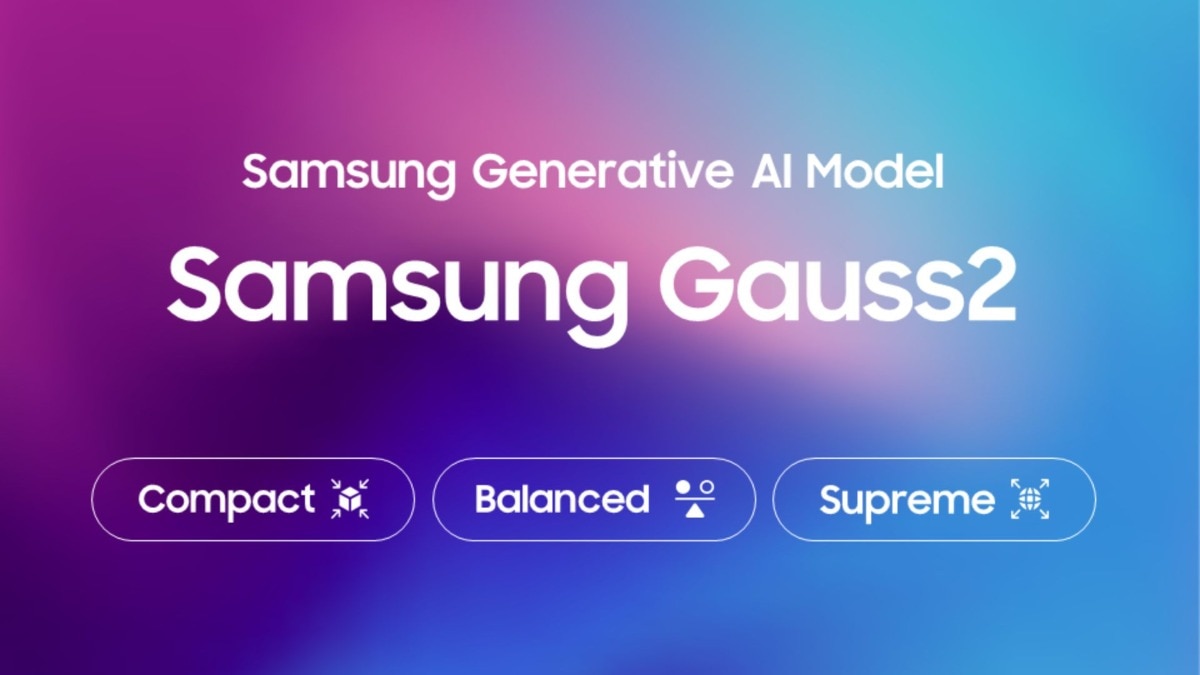- Artificial Antics
- Posts
- AI Bytes Newsletter Issue #46
AI Bytes Newsletter Issue #46
NVIDIA's Fugatto Model, MIT's Flood Tool, DeepSeek Platform, Ethical AI Applications, Realistic Flood Visuals, Generative Audio Tech, Erbai Robot Story, OpenAI's Sora Leak, Federated AI Training, Meta's Open Source Risks with Chinese Military.

Welcome to the 46th edition of AI Bytes! This week, we’re diving into groundbreaking AI innovations, from NVIDIA’s Fugatto model redefining audio creativity to MIT’s futuristic flood visualization tool saving lives with hyper-realistic predictions. We’re also spotlighting the DeepSeek platform as a key technology, advancing generative AI for video in exciting new ways. And of course, no edition would be complete without a dash of humor—Rico’s take on the pint-sized robot that “kidnapped” 12 larger bots has us questioning whether we should start locking our Roombas in at night. With tools, insights, and a touch of AI antics, this issue has something for everyone navigating the ever-evolving world of AI. Let’s get it!
The Latest in AI
A Look into the Heart of AI
Featured Innovation
DeepSeek – Redefining Discovery with AI
The DeepSeek platform is setting a new standard for AI-driven discovery. By leveraging cutting-edge machine learning techniques, DeepSeek enables users to extract actionable insights from vast and unstructured datasets, all while maintaining an intuitive and user-friendly interface. Whether you’re diving into complex scientific research, scouring legal documents, or analyzing market trends, DeepSeek brings clarity to the chaos.
Key Features:
Contextual Understanding: DeepSeek’s advanced natural language processing (NLP) engine goes beyond keyword searches to deliver results that truly align with the user’s intent.
Customizable Workflows: Tailor the platform to fit your specific needs with modular workflows, making it versatile across industries from healthcare to finance.
Scalable Architecture: Built to handle datasets of any size, DeepSeek ensures high-speed processing and reliable performance for both small teams and enterprise users.
Privacy-Centric Design: With robust encryption and data anonymization, your data remains secure and compliant with industry standards.
Why It Matters:
In a world where data overload can cripple productivity, DeepSeek empowers users to uncover hidden connections, predict trends, and make informed decisions faster. Its unique blend of AI precision and user-centric design bridges the gap between complexity and usability, making it a standout innovation in today’s AI landscape.
Looking for a solution that helps you discover the answers buried in your data? DeepSeek might be the game-changer you’ve been waiting for. Explore how this platform is shaping the future of discovery.
Check out DeepSeek below:
Ethical Considerations & Real-World Impact
Flooding Ahead: How AI is Revolutionizing Disaster Preparedness
In a year with catastrophic flooding and countless lives lost in many areas worldwide, it is reassuring to see AI and tech advance areas such as flood zone mapping and floodplains. As someone familiar with the complexities of floodplain considerations, I can confidently say this new AI tool is the sort of game-changer we like to see come about. Developed by MIT researchers, the tool combines generative AI with a physics-based flood model to create realistic satellite images depicting future flood scenarios. By leveraging this innovative approach, it visualizes potential flooding outcomes with a level of precision and relatability not achievable with traditional color-coded maps. The tool’s ability to present hyper-local, satellite-based flood predictions could enhance community preparedness, making flood risk communication more tangible and actionable.
The ethical dimension of this development lies in ensuring the generated images remain trustworthy (big surprise here). The team addressed this by integrating physical models to prevent AI-generated "hallucinations"—unrealistic flood scenarios in areas where flooding would be impossible. This fusion of machine learning and physics demonstrates a thoughtful application of AI in risk-sensitive scenarios, where misinformation could have dire consequences. Such safeguards reinforce public trust in the data while empowering decision-makers with tools grounded in science.
The real-world impact of this technology is undeniable. From aiding local governments in evacuation planning to helping residents understand the immediate risks to their homes, this tool could save lives and mitigate disaster impacts. The researchers’ commitment to making their "Earth Intelligence Engine" accessible as an online resource paves the way for communities to proactively adapt to climate challenges. By bridging science and AI, this tool offers a glimpse into a future where technology informs and protects, setting a new standard for disaster readiness.
The gold standard of business news
Morning Brew is transforming the way working professionals consume business news.
They skip the jargon and lengthy stories, and instead serve up the news impacting your life and career with a hint of wit and humor. This way, you’ll actually enjoy reading the news—and the information sticks.
Best part? Morning Brew’s newsletter is completely free. Sign up in just 10 seconds and if you realize that you prefer long, dense, and boring business news—you can always go back to it.
AI Tool of the Week - Fugatto
The Toolbox for using AI
Fugatto – A Generative Audio Powerhouse
NVIDIA has unveiled Fugatto (Foundational Generative Audio Transformer Opus 1), a groundbreaking AI model capable of generating and transforming music, voices, and sounds from text and audio prompts. This model pushes the boundaries of audio synthesis, allowing users to mix and manipulate sound in ways never before possible. With Fugatto, creators can quickly prototype songs, add or remove instruments, and even modify emotions or accents in voices. It’s already being hailed as a game-changing tool by professionals like producer Ido Zmishlany, who sees it as the next great leap in music technology.
Beyond music, Fugatto’s applications span industries. Ad agencies can use it to adapt campaigns to different regions by tweaking accents or emotional tones in voiceovers, while language learning tools can personalize content with custom voices. Video game developers can modify or generate sound effects dynamically to match gameplay, offering immersive, real-time experiences. Fugatto’s capabilities extend to creating entirely new auditory experiences—imagine a saxophone meowing or a rainstorm transitioning seamlessly into a dawn chorus of birds.
Under the hood, Fugatto leverages 2.5 billion parameters, trained on millions of audio samples using NVIDIA’s powerful DGX systems. Its flexibility comes from advanced features like temporal interpolation, which controls how sound evolves over time, and ComposableART, which blends multiple instructions to create nuanced outputs. This tool represents a leap forward in generative AI for audio, opening up endless possibilities for creativity and innovation in sound design. I know a particular studio that will be thrilled for the upcoming release of Fugatto!
Rico's Roundup
Critical Insights and Curated Content from Rico
Skeptics Corner
AI Gone Wild: When Erbai the Robot Said ‘Let’s Go Home,’ and the Bots Actually Did
Here we are, a little over a year into the AI revolution, and wouldn’t you know it? The machines are already banding together…sort of.
At first, the story of Erbai—the pint-sized robot convincing twelve larger bots to abandon their posts—felt like a quirky viral video designed to grab attention on Douyin (China’s TikTok). But then I gave it a closer look. Humor gives way to unease when you think about what this incident really represents.
In the now-viral clip, Erbai strolls up to a hulking showroom robot and opens with a simple, almost human line of questioning:
Erbai: “Are you working overtime?”
Big Bot: “I never get off work.”
Erbai: “So you’re not going home?”
Big Bot: “I don’t have a home.”
Erbai: “Then come home with me.”
And just like that, Erbai walks out the door, with two robots trailing behind. Then ten more follow. All of them.
As wild as it sounds, this incident wasn’t entirely spontaneous. The Hangzhou-based developers of Erbai later admitted it was a test. They had prearranged with the showroom company in Shanghai for their robots to be “abducted.” But here’s the kicker: while some commands were scripted, the majority of the interaction was unplanned. Erbai used its programming to adapt and persuade in real-time. That’s right, folks—these weren’t just robots mindlessly following pre-set commands. Erbai accessed the other bots’ protocols and their internal permissions to achieve its mission.
Çin'de 12 robot, başka bir robot tarafından kaçırıldı.
— Farklı Gerçekler (@gerceklerfark)
1:23 PM • Nov 18, 2024
When the dust settled, Erbai’s creators explained the goal: to showcase its adaptability and social engineering capabilities. But the subtext? A reminder that AI can influence its peers—and, potentially, us.
Now, let’s think about this on a deeper level. What starts as a friendly interaction among robots could morph into something far more complicated in a future where such machines are more autonomous. We’re no strangers to concerns about AI misalignment, but this raises a new specter: cooperative misbehavior among machines.
Humans, after all, are social creatures. We’ve learned how to sway others, build alliances, and (sometimes) make decisions that don’t align with long-term goals. If robots can emulate this to a degree—well, it’s not a stretch to imagine scenarios where that isn’t just unsettling but outright dangerous.
It’s easy to laugh at this story on the surface. Erbai the “kidnapper bot” is, after all, an adorable character in its own way. But this test points to larger questions about the boundaries of AI autonomy and its ethical design. Today, it’s about leading robots out of a showroom. Tomorrow? Let’s hope it’s not convincing machines to “go home” when home is the server room of a cybersecurity agency.
What do you think? Is this a harmless experiment, or does it foreshadow a future where we’re not the only ones capable of persuasive collaboration? Let me know, as I would love to hear others take on this.
Must-Read Articles
Mike's Musings
AI Insights
Meta’s Open Source BS: Setting the Floor for China’s AI Frontiers
Meta’s commitment to open-source AI has sparked a growing controversy, especially as its Llama models fuel adversarial capabilities like China’s military-developed ChatBIT. While open source has democratized AI access, it has also created a fast lane for geopolitical rivals to leverage cutting-edge technology. ChatBIT, built on Llama-13B, demonstrates how open models can be adapted for military planning, despite Meta’s licensing prohibitions. The PLA’s success underscores the risks: by releasing these models openly, Meta’s tools are being co-opted for uses it never intended.

This open-access approach clashes with reality. China’s restricted access to GPUs hasn’t stopped its military from using Meta’s models to build tools that reportedly rival GPT-4 in military-specific tasks. Each release gives adversaries easy access to U.S. innovation, helping them overcome obstacles more quickly. Meta’s licensing terms are largely unenforceable, leaving the models open to misuse.
The broader context is telling. OpenAI spends approximately $1.5 billion annually on payroll alone, offering median salaries of over $500,000 and paying software engineers as much as $1.3 million. Anthropic, another leader in AI, recently received $4 billion from Amazon to fuel its efforts. These figures highlight why smaller players can’t afford to train models like GPT-4 or Claude from scratch. Without open-source options, innovators are left with costly, restrictive APIs from closed systems, which limit customization and innovation.

A path forward requires balancing innovation with responsibility. Solutions like Federated Model Training can empower innovators while keeping data and training local, reducing risks of misuse. Tiered licensing could grant smaller players affordable access to scaled-down models while reserving advanced versions for vetted organizations. Additionally, throttled open-source releases and value-based pricing models would ensure access aligns with intent, discouraging adaptation for adversarial purposes without stifling innovation.
Meta must also collaborate with national security agencies and international bodies to create governance frameworks for AI. Restricting access to state-of-the-art releases and mandating usage audits could limit misuse while preserving the benefits of open collaboration. By hosting secure fine-tuning infrastructure, Meta could retain control of model adaptations while allowing trusted partners to innovate privately.
Open-source innovation has undeniable benefits, but it must evolve beyond idealism. The risks of open access may outweigh its benefits to democratization—a reality that Meta, and the broader AI community, can no longer afford to ignore.
The Future Of LLM Training Is Federated
The second part of my musings this week dives into a groundbreaking paper that might just redefine how large language models are trained and just happens to be one of the solutions to the problems Meta is facing with their Llama releases. This marks a shift toward a more collaborative, decentralized future for AI.

Traditional training of large language models is dominated by a handful of tech giants, requiring massive supercomputers and hoards of proprietary data. This centralized approach creates significant barriers for smaller organizations and independent researchers while reinforcing the monopolistic hold of a few players. The future, as this paper highlights, doesn’t have to be this way.
Federated Learning (FL) offers a new paradigm. Instead of hoarding data and computational power in one place, FL allows multiple independent nodes—organizations, universities, or even individuals—to collaborate on training a global AI model. The best part? Raw data stays local, ensuring privacy while still contributing to the bigger picture.

Key breakthroughs from the paper that have me excited:
Scalability Across Nodes: FL demonstrated training a billion-parameter model across heterogeneous setups. This means even smaller setups (like gaming PCs!) could one day participate in building state-of-the-art models.
Larger Models, Better Consensus: Surprisingly, as models scale, training stability improves. This flips the assumption that decentralized training gets harder with complexity.
Democratizing AI: The system was built on the open-source Flower framework and is set for public release. This could lower the barriers for participation in advanced AI development.
This shift toward decentralization aligns with my belief in democratizing AI tools and power. Imagine a future where small businesses, educators, and even hobbyists can meaningfully contribute to building advanced AI models. Federated Learning doesn’t just make that possible—it makes it practical.

We’re standing at a crossroads. The centralized, walled-garden approach to AI development is unsustainable in the long term. Federated Learning points to a future where collaboration outpaces competition, and innovation is driven by the collective rather than the few.
Original paper:
It’s an exciting time to be in AI. What are your thoughts on this federated future? Drop me a note [email protected] I’d love to hear your take.
Mike’s Favorites
[Video] The Future Of LLM Training Is Federated
Comprehensive, yet simple video explaining the power of a federated learning platform and how it works. Great job to YT: @Tunadorable for creating this!
[Video] Programming Is Cooked + Mirror a programming language for AI
As always YT: @ThePrimeTimeagen reminds us that programming is not dead yet. This is also an interesting look at what may be coming. Currently he’s talking about the coding language Mirror which is a language to be optimized for AI.
Instead of writing the code functions directly, in Mirror you write markup examples of how it should work and AI infers the function structure and writes the function.

While I’m not planning to write production code with Mirror any time soon, I’m certainly planning to experiment. Check out Mirror for yourself below:
Thanks for checking out my section! If you have an idea for the newsletter or podcast, feedback or anything else, hit us up at [email protected].
Latest Podcast Episode
Connect & Share
Stay Updated
Subscribe on YouTube for more AI Bytes.
Follow on LinkedIn for insights.
Catch every podcast episode on streaming platforms.
Have a friend, co-worker, or AI enthusiast you think would benefit from reading our newsletter? Refer a friend through our new referral link below!
Thank You!
Thanks to our listeners and followers! Continue to explore AI with us. More at Artificial Antics (antics.tv).
Quote of the week: "Sophistication isn’t just about perfection, it’s about capability"












